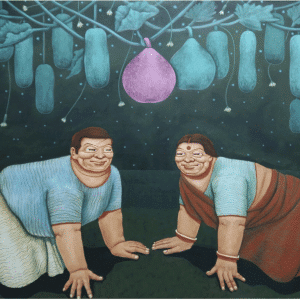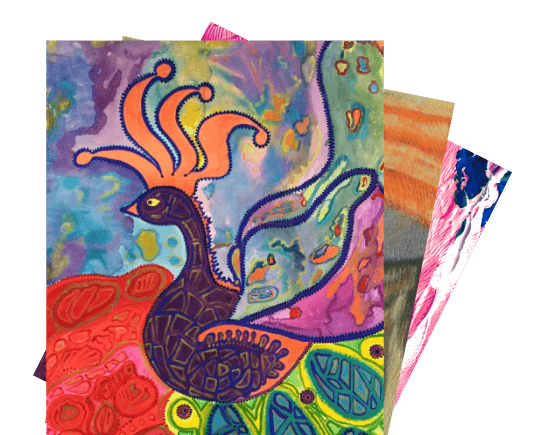Filters
Available Artwork
Showing 19–19 of 19 results
Other styles of paintings you may like
Origins of Blue Painting:
The colour blue has been in use since ancient times. The earliest synthetic blue pigment, known as Egyptian blue, was invented in ancient Egypt around 2200 BCE, approximately the same time the Great Pyramids were constructed. Made from silica (sand), lime, copper compounds, and alkali, it was fired to produce a durable calcium copper silicate pigment. Egyptians used blue in tombs, statues, and ceramics to symbolise the heavens and fertility. Egyptian blue remained popular in the Roman Empire, but it was soon replaced by new shades of blue paint that became available on the market. In 2006, nearly two millennia later, conservation scientist Giovanni Verri made an accidental find that brought Egyptian blue back to the fore.
The colour blue was mentioned in the Hebrew Bible as 'tekhelet'. Additionally, the rarity of blue pigment made it more valuable, as it was challenging to produce. Artists across the ancient Near East coveted lapis lazuli, a semi-precious stone mined in Afghanistan, for its vivid ultramarine pigment. It appeared in Byzantine mosaics and later in medieval Europe, where it was used sparingly in illuminated manuscripts.
The Greeks imported indigo dye from India, calling it indikon, and they used it to paint with Egyptian blue. The Romans made extensive use of indigo and Egyptian blue pigment, as evidenced in part by frescoes in Pompeii. In the 12th century, the Roman Catholic Church in Italy (and then across Europe) mandated that painters depict the Virgin Mary in blue. This made blue a colour associated with holiness, humility, and virtue. In medieval paintings, blue was used to draw the viewer's attention to the Virgin Mary. Paintings of the mythical King Arthur began to show him dressed in blue. The coat of arms of the kings of France became an azure or light blue shield sprinkled with golden fleur-de-lis or lilies. Blue had come from obscurity to become the royal colour.
Blue saw more widespread use starting in the Renaissance. During this period, artists began to paint with a focus on perspective, depth, and the appearance of light and shadows emanating from a single source. In these Renaissance works, painters aimed to create harmony between blue and red, often lighting the blue with lead white paint and adding shadows and highlights. Raphael was particularly skilled at this, carefully balancing reds and blues so that no single colour overpowered the painting. Ultramarine was the most prestigious blue of the Renaissance, being more expensive than gold. Wealthy art patrons commissioned works with the most costly blues possible. In 1616, Richard Sackville commissioned a portrait of himself by Isaac Oliver, featuring three different blues, including ultramarine pigment, for his stockings.
Recognising blue's substantial emotional impact, many artists in the 19th and 20th centuries made it the primary focus of their paintings. This group included Pablo Picasso, Pavel Kuznetsov and the Blue Rose art group, as well as Kandinsky and the Der Blaue Reiter (The Blue Rider) school. Henri Matisse famously expressed deep emotions with blue, stating, "A certain blue enters your soul." In the latter half of the 20th century, abstract expressionist painters employed blues to evoke ideas and emotions. Painter Mark Rothko noted that colour was "only an instrument;" his true interest lay in "expressing human emotions—tragedy, ecstasy, doom, and so on."










